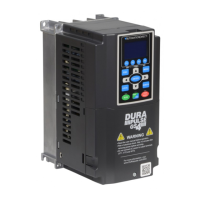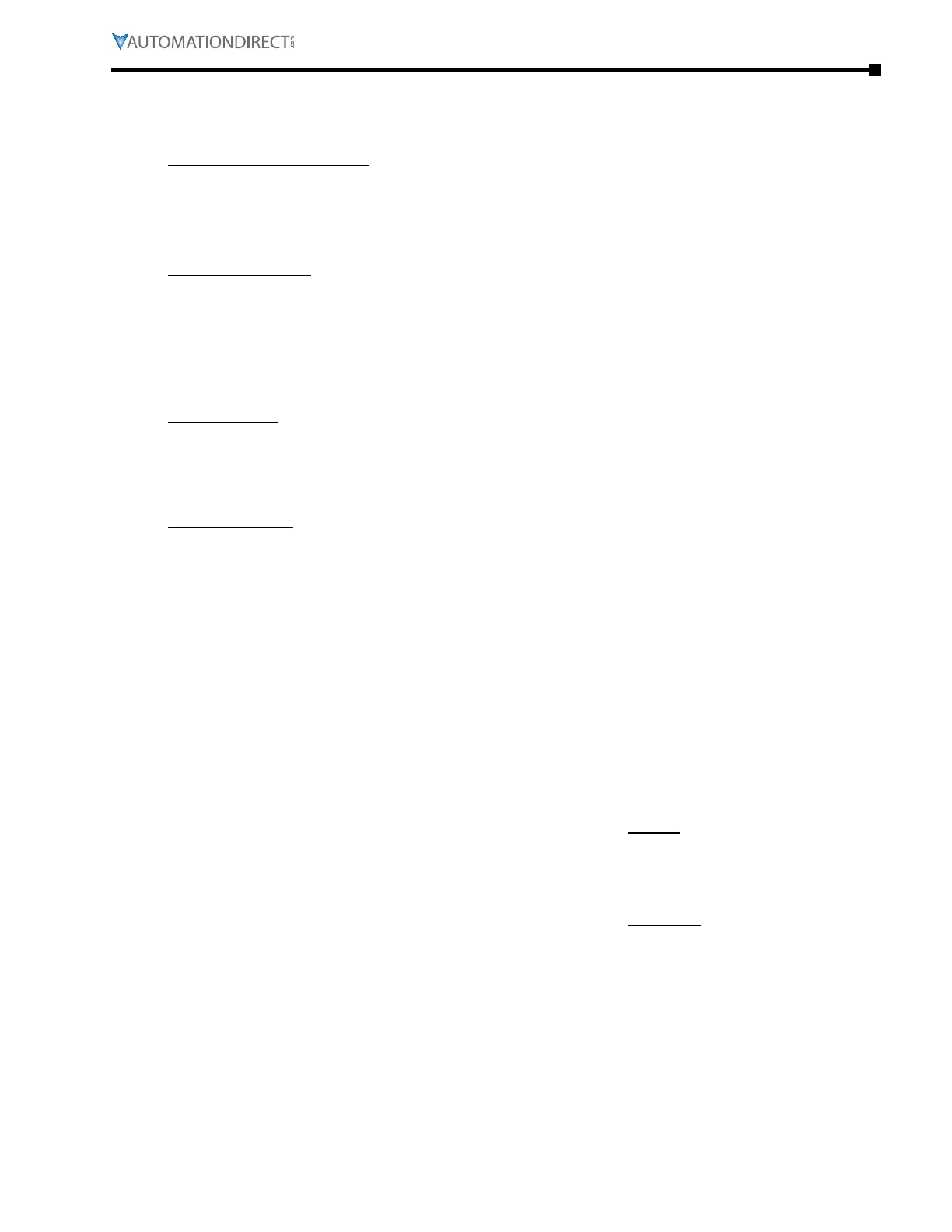Appendix F: PID Control
Page F–3
DuRApulse GS4 AC Drive User Manual – 1st Ed, Rev A - 10/20/2017
Pid control analogy
PID controllers are all around us. Many times we don't realize that we are the PID controller in a
control loop. For example, the driver of a car is the PID controller for the car's speed.
PID Control System Variables:
•
Desired Speed ≈ Setpoint
•
Actual Speed ≈ Process Variable
•
Gas Pedal ≈ Control Variable
•
Speedometer ≈ Feedback
Pr oportional Control: The farther away you are from your Desired Speed, the more you press
the gas pedal. If you did this starting from a stand-still, you would floor it and probably shoot
far past the Desired Speed. Once the speed "settled in," you would never hold exactly at your
Desired Speed because the difference between Desired and Actual Speed would get very
small and you only have so much control over the pedal and your foot; not enough to hold the
perfect speed consistently. So, Proportional Control adjusts the output based on the difference
between the Setpoint and Process Variable much more accurately in a fine-tuned way.
In tegral Control: If your Desired Speed is 70mph and your car consistently goes 69mph, you
will realize that you need to press the gas pedal a little more (to overcome wind resistance, a
hill, etc.). The longer you are under the Desired Speed, the more gas you give the car. That is
fundamentally what Integral Control does; adjust the output based on how long the system is
away from the setpoint.
D erivative Control: In the situation above, assume that you start going up a hill. The car's Actual
Speed gets farther away from the Desired Speed, so the Proportional Control makes you press
the gas pedal more. The longer the speed stays below setpoint, Integral Control makes you
press the gas even more. Now assume that your car tops the hill and starts going downhill. Your
speed gets faster (the error between Desired Speed and Actual Speed), so Proportional causes
you to slightly let off the gas. But Integral still keeps adding to the pedal (since you still haven't
reached Desired Speed). Your internal Derivative Control sees that you are rapidly approaching
the Desired Speed, so you begin to let off the gas quickly. That is Derivative Control; it adds or
subtracts to the Control Variable based on how quickly the system is approaching (or leaving) the
setpoint.
Forward-acting vs. reverse-acting Pid looPs
Forward-acting Pid looP (heating looP)
The term "Forward-Acting," or "Heating" is used to describe a PID loop that can be used to control
processes such as pressure, heating, and flow (among others).
•
Greater Output Frequency (Hz) drives the Process Variable (PV) upward toward the Setpoint (SP).
reverse-acting Pid looP (cooling looP)
The term "Reverse-Acting," or "Cooling" is used to describe a PID loop that can be used to control
applications such as cooling.
•
Greater Output Frequency (Hz) drives the Process Variable (PV) downward toward the Setpoint
(SP).

